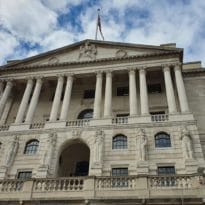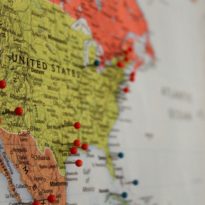In a fun article, Michael Pashley, managing director, Practical Financial Exams, dons his pointy hat and cloak to take a look at what investment would be like in the wizarding realm of Harry Potter.
Financial planning can be dull at times, so why not take five minutes to zone out and indulge your inner-Harry Potter nerd? Let’s imagine for just five minutes that you are a financial planner in the Wizarding World. What investment options are available, and which would you recommend to your magical clients?
Cash, Currency, and Commodities
Gringotts is the wizarding bank. It consists of thousands of heavily guarded individual vaults containing physical wizarding currency and/or other valuable assets. Gringotts’ service appears to proritise security over payment of interest. Indeed, there is the obvious practical problem of a goblin having to go vault-to-vault to value its contents and then deposit the appropriate interest. Unless the vaults are somehow enchanted to add interest by magic, or interest is dropped off by owl post, cash seems like a non-starter. However, while traditional investment into cash may not yield a return, adventurous investors may find refuge speculating on wizarding/muggle currency exchange rates.
Exchange rates between wizarding and muggle currency will fluctuate because wizarding money is made from the physical commodities gold, silver, and bronze, which trade on muggle markets. If wizarding investors thought that the value of these commodities was going to fall, they could buy muggle money and exchange it for wizarding money later to close out their position. However, this would be high-risk. Commodity markets can be extremely volatile, and most witches and wizards don’t appear to know how to even dress like muggles, let alone competently speculate on their financial markets. This one is the preserve of witches and wizards with O grades in their Muggle Studies NEWT.
Traditional investment into gold, silver, and bronze presumably isn’t viable because that’s what wizarding currency is made of. That said, there may be magical commodities markets beyond this. I’d be surprised if there weren’t markets for potion ingredients of varying degrees of rarity – everything from lacewing flies to unicorn horns. In the absence of a derivatives exchange, the problem with this is practical – can you imagine storing barrels of dragon blood in your living room while you wait for the market to change direction?
Bonds and Gilts
Even if the central bank doesn’t pay interest, the concept of borrowing money – or at least being in debt – is a thing in the Wizarding World. This opens the door up to fixed-interest securities issued by magical businesses and the Ministry of Magic. There don’t appear to be many big companies in the Wizarding World, mainly small private and family-owned businesses in places like Diagon Alley and Hogsmeade. As such, we can reasonably expect high yields.
One possibly larger business is the Daily Prophet newspaper. However, it is corrupt to its core and could be a problem for ethical investors even if it does make money.
Another larger business is Gringotts itself. One assumes that Gringotts lends its own gold to customers in exchange for interest, and possibly provides other services such as a suite of investment products. It also has competent management. Even when the Death Eaters took over, while the goblins were treated like second-class citizens, they still appeared to keep their business. But there were at least two high-profile robberies and an escaped dragon which would’ve undoubtedly damaged consumer confidence. Ethical investors would also object to the imprisonment of dragons to guard vaults. On balance, without any other magical companies of this size in the market, I think this would be a low-yield bond.
Many of the adult characters in the books appear to work for the Ministry of Magic. Even if running a spending surplus, it makes sense that the Ministry would need to borrow to fund infrastructure projects like the Quidditch World Cup. Because we don’t know what’s on the Ministry’s balance sheet, we can’t say for sure, but I’d expect yields to be volatile. Throughout the seven Harry Potter books, we’ve had one Minister of Magic resign in disgrace, and another brutally murdered. In the Deathly Hallows, the Ministry fell to the Death Eaters which would’ve spooked bondholders.
Bonds issued by public organisations like Hogwarts and Azkaban may be available. Given that Hogwarts’ Headmaster was murdered, leading to a wholescale invasion and a load of staff and students dying (including another Headmaster being murdered) and that Azkaban has seen numerous high-profile escapes, we could be looking at a high yield.
This brings us around to an issue: there are very few low-risk bonds available in the Wizarding World, at least in the UK. Risk-averse investors may need to buy bonds issues by foreign magical companies and governments. Perhaps countries such as the USA have larger, more stable magical governments and companies issuing bonds, although these may come with currency risk if gold, silver, and bronze are not accepted.
If Gringotts offers a suite of investment funds alongside its traditional banking services, it may offer a bond fund which provides a degree of sector and geographical diversification, helping to reduce risk and ease portfolio administration.
Property
Residential property appears to be a non-starter in the Wizarding World. In the entire history of the books, I can’t recall anyone either selling their house or renting. Furthermore, many people seem to build their own houses rather than pay for someone else to build it for them.
However, there may be a market for commercial property investment. No doubt, the businesses in Diagon Alley and Hogsmeade don’t own their properties but rent them. Given the high cost and risk of physical property investment, a Gringotts property fund might do well here, providing a (given the risk) high rental yield for income-seekers. When the Death Eaters took over, Diagon Alley and Hogsmeade took a dive as business owners were forced to flee, but apart from this, retail outlets always seemed to have tenants.
Equity
This is high risk, high reward. As we’ve covered already, blue-chip companies are rare in the Wizarding World. There doesn’t appear to be a stock-market, so the only equity available will be private equity. This could be extremely high-risk and illiquid. Imagine trying to sell a share in Honeydukes, the Three Broomsticks, or Olivander’s!
I envision the only access to this private equity market is via the assumed Gringotts investment funds. It’d otherwise be far too high-risk for all but the wealthiest investors.
Michael Pashley FPFS PFE(PIP)® is Managing Director of Practical Financial Exams Limited, a niche qualification provider specialising in financial planning practical skills, including key paraplanning skills such as suitability report writing and cashflow modelling. Find out more at www.practicalfinancialexamsco.uk
[Main image: artem-maltsev-3n7DdlkMfEg-unsplash]



































